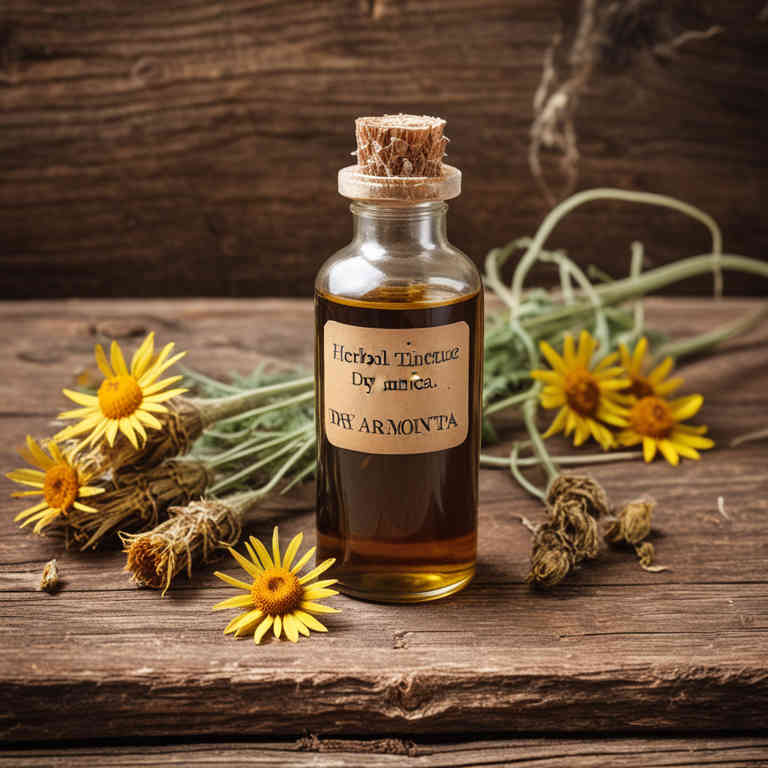Arnica montana tincture for medicinal use

Arnica montana tincture is a concentrated herbal preparation made by soaking the dried flowers of the Arnica montana plant in alcohol.
It is commonly used in herbalism for its anti-inflammatory and pain-relieving properties. This tincture is often applied topically to reduce bruising, swelling, and muscle soreness. It is typically diluted before use to avoid skin irritation.
In traditional medicine, it has been used to support recovery from injuries and to alleviate joint pain.
Uses
Arnica montana tincture has been used to treat injuries, inflammation, and pain for centuries, particularly in traditional European medicine.
Historically, it was used by herbalists and healers to alleviate symptoms of bruises, sprains, and muscle soreness. In traditional use, it was applied topically to the skin to reduce swelling and promote healing. Modern applications include its use as a topical treatment for muscle pain, arthritis, and even as a complementary therapy in sports medicine.
However, it is important to note that it should not be ingested due to its potential toxicity.
Benefits
Arnica montana tincture has health benefits such as reducing inflammation, alleviating pain, and promoting healing in musculoskeletal injuries.
It is commonly used to treat bruises, sprains, and contusions due to its anti-inflammatory and analgesic properties. The tincture contains sesquiterpene lactones, which contribute to its therapeutic effects. It may also help with conditions like arthritis and muscle soreness when applied topically.
However, it should not be ingested as it can be toxic when taken internally.
Constituents
Arnica montana tincture active constituents include sesquiterpene lactones, flavonoids, phenolic acids, and alkamides.
These compounds are believed to contribute to the herb's anti-inflammatory, analgesic, and antiseptic properties. Sesquiterpene lactones, such as helenalin, are primarily responsible for the preparation's ability to reduce inflammation and pain. Flavonoids and phenolic acids provide additional antioxidant support, helping to protect cells from oxidative stress.
Alkamides may play a role in modulating the immune response and enhancing the overall therapeutic effects of the tincture.
Preparation
To make Arnica montana tincture, begin by gathering fresh or dried Arnica montana herb and ensuring it is free from contaminants.
Next, place the herb in a clean glass jar and cover it completely with high-proof alcohol, such as 150-proof vodka or grain alcohol. Seal the jar tightly and store it in a dark, cool place, shaking it gently every few days for four to six weeks. After the steeping period, strain the liquid through a cheesecloth or fine mesh strainer to remove the plant material.
Finally, transfer the tincture to dark glass bottles and store it in a cool, dark location, away from direct sunlight.
Side Effects
Arnica montana tincture may lead to gastrointestinal upset, including nausea, vomiting, and diarrhea, especially with high doses.
It can also cause allergic reactions such as skin rashes, itching, or more severe symptoms like anaphylaxis in sensitive individuals. Prolonged use or excessive consumption may lead to liver toxicity, as arnica contains compounds that are potentially harmful in large amounts. It is important to avoid applying it to broken skin or open wounds, as it can cause irritation or chemical burns.
Always consult a healthcare professional before using arnica montana tincture, particularly if you are pregnant, nursing, or taking other medications.